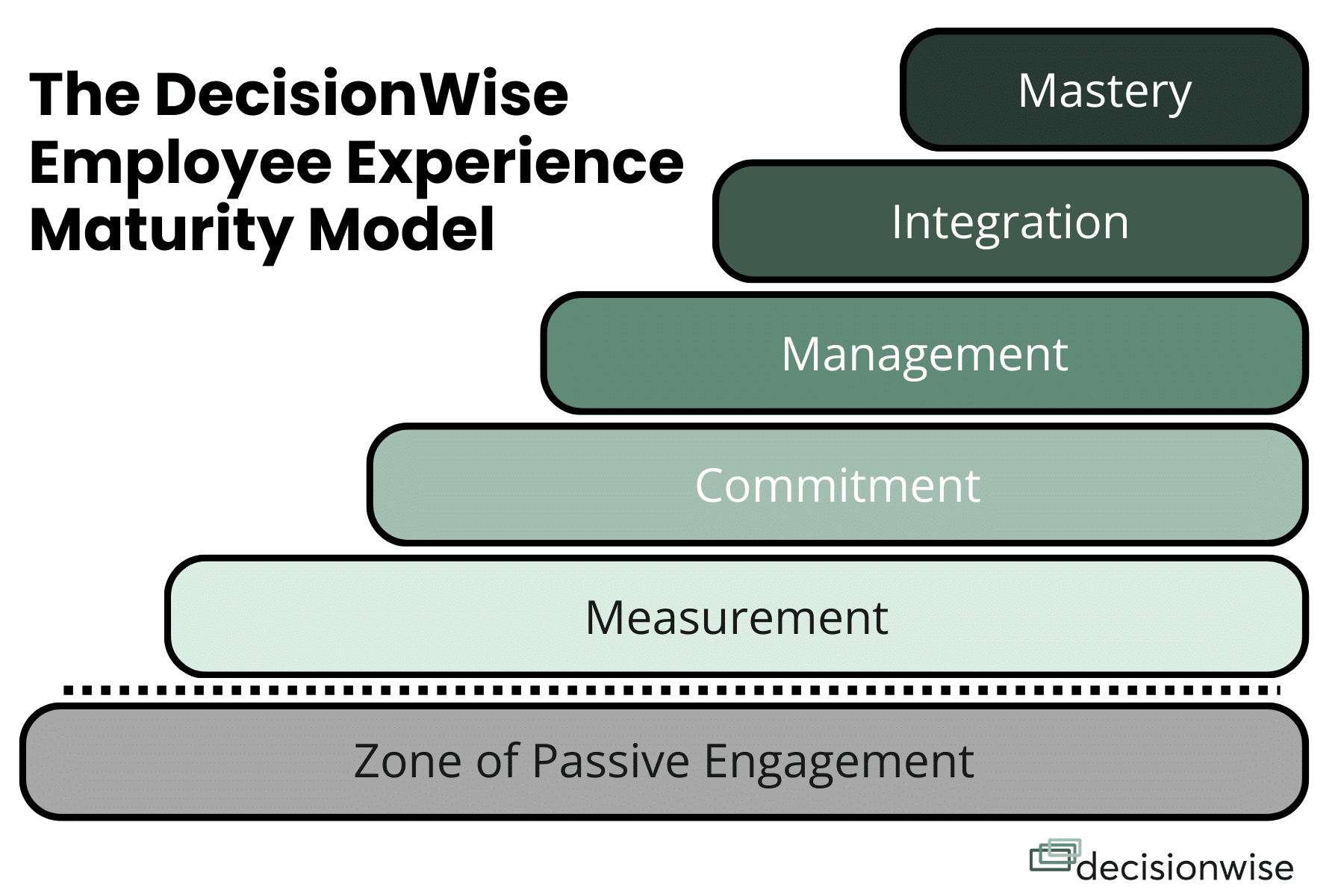Introduction
As we bid farewell to the current year, we aim to equip leaders and organizations with five invaluable tips to elevate employee engagement scores across the board. In our latest webinar we delved into this topic — an insightful discussion you won’t want to miss! Interestingly, while tip number four might seem ordinary, its effectiveness is unparalleled.
Employee Engagement: The Outcome
Before diving into the tips, it is crucial to clarify that employee engagement is an outcome, shaped by the employee experience. This experience is essentially the manifestation of your company’s culture through the lens of your workforce, either intentionally crafted or organically evolved. Hence, the way we increase employee engagement is by building exceptional and effective employee experiences.
Now, let’s delve into the five employee experience tips that consistently prove to be powerful drivers of employee engagement.
#1: Increase Leadership Availability
During the pandemic, we witnessed an uptick in engagement scores and positive sentiment surrounding senior leaders. This was unexpected given the challenges we all faced. However, a key variable changed dramatically: leaders became more visible and authentic. The pandemic softened the pervasive power dynamic in many organizations, making leaders appear more relatable. Suddenly, leaders showed up on zoom calls in jeans and running shoes, dogs came bounding into scene, and toddlers were glimpsed bouncing around the room.
Now that the pandemic is fading, leaders may not realize their accessibility and visibility are also fading. In your next employee engagement survey, ask, “Do senior leaders know what is going on in the organization?” You’ll likely find a direct correlation between this question and overall employee engagement.
This does not mean leaders do not know how to do their jobs; it means that employees feel leaders don’t understand what it is like for the employees to do their jobs. Narrowing that gap can significantly improve employee engagement scores.
#2: Create a Compelling Future
Al Davis, former owner of the now Las Vegas Raiders, once famously quipped, “Just win baby.” That sentiment applies equally to sports franchises and organizations of any size and structure. When consulting with companies that are struggling with employee engagement, we often look to this question first: “I am confident that this organization has a successful future.” There’s almost invariably a strong association between low engagement scores and skepticism about the organization’s future. If this is a problem, fix it first, as all other activities may be perceived as attempts to mask this core issue.
Winning matters because it signals success, effectiveness, and the importance of each employee’s contributions. It fosters a sense of meaning in their work, even if they’re somewhat removed from the organization’s frontline mission.
The bottom line…just win baby…
#3: Build Org-First Managers
Org-First Managers, a unique DecisionWise concept, stems from our repeated observations. Analyzing millions of survey responses, we identified a crucial trend: teams primarily aligned with their managers and centered on team goals often have lower engagement scores than those emphasizing the organization’s mission. This insight categorizes managers into three fundamental types: Me-First, Org-First, and Team-First.
Surprisingly, Org-First managers, prioritizing the organization’s mission, consistently exhibit the highest engagement scores. Here’s why:
- Me-First Managers: Unmasked over time, they initially appear as superstars due to self-promotion. Common tactics include:
- Taking credit for others’ work
- Prioritizing personal desires over others and the organization
- Using scorched-earth tactics
- Spending excessive time managing up rather than aiding the team
Result: Burnout, high turnover, and low motivation within the team.
- Org-First Managers: Demonstrate:
- Advocacy for organizational vision, values, and decisions
- Prioritization of organization goals over team goals
- Treating other managers as the leader’s primary work team
- Efforts to build employee relationships across the organization
Org-First Managers typically boast the highest engagement scores throughout the organization.
- Team-First Managers: Appear as those caring most for the team, but their actions lead to:
- Protecting team members from other parts of the organization
- Prioritizing team goals over organizational goals
- Sacrificing personally for the team
- Playing the role of the team hero
Outcome: Strong relationships but also silos and an us vs. them mentality.
While most Team-First Managers don’t intend to follow this path, our data strongly suggests it’s the wrong approach. New managers should adopt an organizational focus, as evidenced by the correlation between Org-First managers and high engagement. This highlights the significance of organizational alignment and indicates that emphasizing the broader mission positively influences team engagement levels.
#4: Hold Managers 1:1s
There is no magic in this suggestion. Supported by decades of data and millions of survey responses, when one-on-one meetings are held and protected, employee engagement scores significantly increase.
Regularly meeting with each employee signals their importance, allows their voices and opinions to be heard, and provides an excellent opportunity for mentoring and coaching.
The more you connect with employees during consistent one-on-ones, the more your scores will increase. For example, once-a-month sessions are better than every six months, and the optimal cadence is around once a week.
In keeping with our idea of sports slogans, this a case of “Just do it.”
#5: Connect Employees to the Customer
Meaning and impact, essential components of employee engagement, extend beyond rewards and compensation. Linking employees directly to the customer experience enhances their sense of purpose. Managers play a crucial role in reinforcing this connection, ensuring that employees recognize the tangible impact of their work on customer satisfaction.
For instance, a manager might underscore how the seamless functionality of a software product results from the diligent work of the QA team. Continually reinforcing this connection contributes to a deeper understanding and appreciation among employees.
What are some other ways you can help connect your team to your organization’s customer?
Conclusion
While tempting novelties like employer-provided pet insurance may catch attention, the five tips outlined above are empirically proven and highly effective strategies for boosting employee engagement. Backed by substantial statistical evidence, these tips offer a practical roadmap to elevate your organization’s engagement scores.
Implement them with confidence, and the rewards for your efforts are bound to manifest. Elevate your workforce engagement to new heights!



